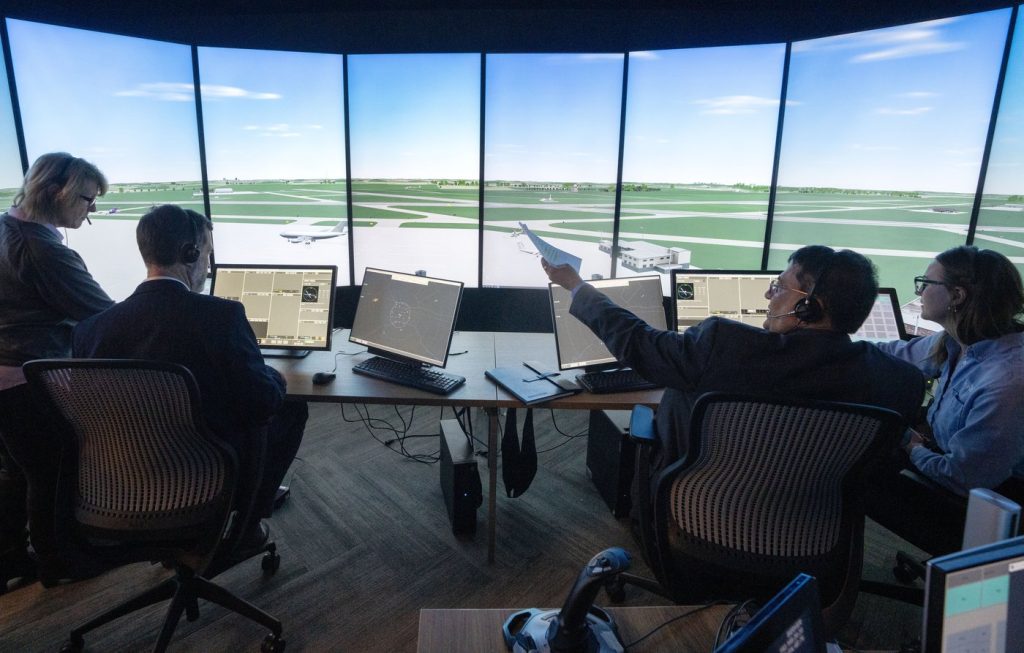MONTREAL — Air traffic controllers are facing a severe labor shortage exacerbated by an increasing demand for air travel and an aging workforce. CAE Inc. has launched a new air traffic training center in Montreal to help address this urgent need by planning to train 478 air traffic students by 2028. This initiative comes in collaboration with Nav Canada, which oversees Canada's civil air navigation and offers courseware for the aspiring controllers.
The training program, which is among the longest in the aviation sector—taking between 10 to 27 months—aims to boost the number of graduates in response to escalating requirements for air traffic controllers. As air travel rises, the already high demands on current controllers, who manage vast expanses of airspace and ensure the safety of flights through a complex network of maps and radar systems, are set to increase further.
A recent simulation exemplified the training environment at the new facility: instructors guided students through emergency scenarios, demanding quick thinking and precise communication. “Runway two-seven is yours for the emergency,” an instructor confirmed, underscoring the real-time decision-making required in the field. This hands-on training is critical as the simulation exercises aim to replicate actual emergency situations that controllers face.
Current graduation rates for air traffic controllers at Nav Canada are approximately 40%, significantly lower than the 76% rate for flight service specialists. The recruitment of new controllers is hindered by the demanding nature of the job, which requires not only spatial awareness and the ability to memorize complex codes but also the capacity to remain calm under pressure. “It’s meant to be hard,” stated Nav Canada spokeswoman Vanessa Adams.
With about 2,000 air traffic controllers and flight service specialists currently employed, the pressing need for more personnel is underscored by anticipated retirements within the existing workforce. Nick von Schoenberg, president of the Canadian Air Traffic Control Association, emphasized the severity of the situation, noting ongoing efforts by Nav Canada to alleviate the shortage.
In 2023, the International Air Transport Association highlighted Northwest American air traffic control organizations for staffing shortages, describing these issues as leading to “unacceptable delays and disruptions” in air travel. A United Nations agency's draft report revealed that Canada’s flight safety oversight has significantly deteriorated over the years, moving from an A+ to a C grade.
Moreover, the lack of staffing not only introduces stress and pressure on existing controllers but potentially compromises safety margins in air traffic management. Attractive salaries, ranging from $133,000 to $194,000 as a baseline, with the potential to exceed $250,000 with overtime in high-demand areas, continue to be a significant draw for potential recruits.
Ultimately, as CAE and Nav Canada respond to this critical shortage, their combined efforts signal a proactive approach to ensuring a stable future for air traffic control in Canada, laying a foundation for safety and efficiency in increasingly crowded skies.










